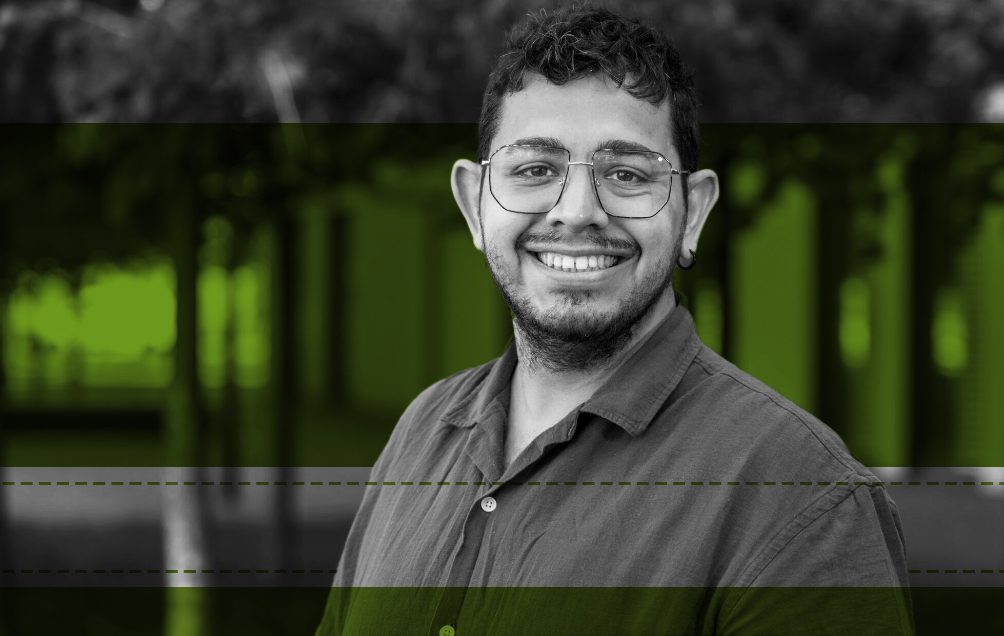12 October 2018 – Drosophila rely heavily on a sense of smell to navigate the world, but how do they classify scents into meaningful categories? An odour such as carbon dioxide can signal the presence of fermenting fruit (good) or a group of very stressed fellow fruitflies (bad). And an incoming fly must choose the appropriate behavioural response – feeding or leaving the scene as quickly as possible.
The answer seems to lie in the mushroom body, a higher brain region in flies that ‘reads’ the aversive input and balances it with a ‘reward’ input from dopaminergic neurons sensing other odours, emitted, in this case, by ‘good’ food sources. Such contextual modulation of behaviour has a relevance extending far beyond a humble fruitfly’s desire to find rotting fruit; it may yield insights into how mammalian brains make analogous decisions.
Taking a chance
Nicolás Fuenzalida-Uribe, a recent PhD graduate in Jorge Campusano’s lab at the Universidad Católica de Chile in Santiago, works on a twist to the Drosophila olfactory story: how ageing affects contextual modulation. During his PhD project, Fuenzalida-Uribe showed that older flies have an altered response to benzaldehyde, which like carbon dioxide, is another context-dependent feed-or-flee-stimulus. To dissect the physiology of this behaviour in more detail, he decided that he wanted to use calcium responsiveness, a proxy for neuronal activity, to see if Kenyon cells, the specialised olfactory neurons in mushroom bodies, change their neural activity in response to benzaldehyde as flies age.
Unfortunately, the very expensive two-photon microscope he needed to do this work wasn’t available in his home lab. Undeterred, Fuenzalida-Uribe did an internet search for groups with the right microscope together with expertise in Drosophila olfactory bulb imaging, and came up with Ilona Grunwald Kadow’s lab at the Technical University of Munich, Germany. He emailed her, and was delighted when she suggested he could come for a visit. As a source of funding, Grunwald Kadow suggested he applied for an EMBO Short-Term Fellowship, which he had not previously heard of.
The beginnings of a postdoctoral project?
Having arrived in Munich and settled in to the housing the Technical University provides for its temporary researchers, Fuenzalida-Uribe’s first task was to set up crosses of the flies he’d need, so that they’d be appropriately aged towards the end of his three-month visit. He was taught how to use the two-photon microscope by Siju Kunhi Purayil, a postdoc in the lab, and by the end of his time in Germany, had successfully shown age-dependent differences in calcium dynamics, which can potentially be used as physiological markers for the aging process. He now hopes to be able to return to Germany as a postdoc to continue the project.
In addition to working hard during his time in Munich, Fuenzalida-Uribe managed to do a bit of sightseeing: “The lab organised a trip to the oldest continuously working brewery in the world,” he says, “and they also helped me test some of the beer in Munich!” However, his favourite trip was to Prague: “I really like Franz Kafka, and one of my dreams has always been to visit the place he was from,” he says. “That was very special for me.”



